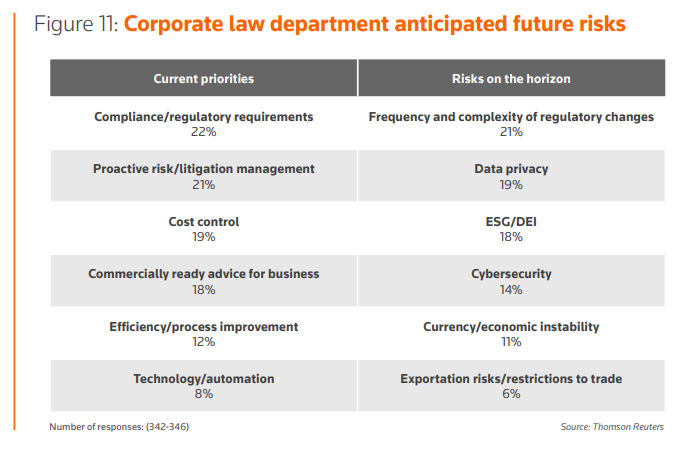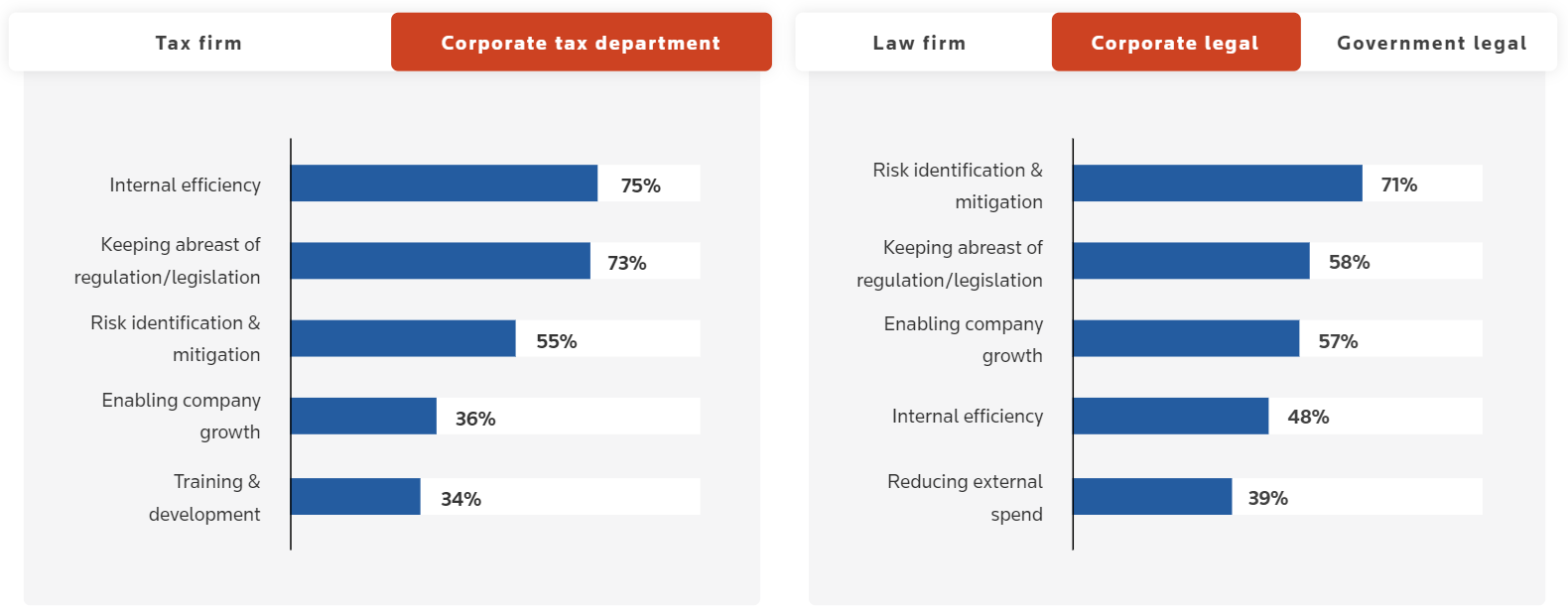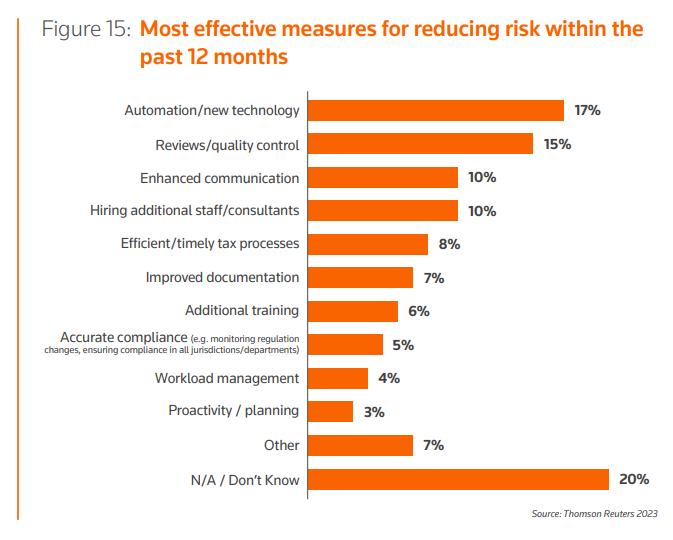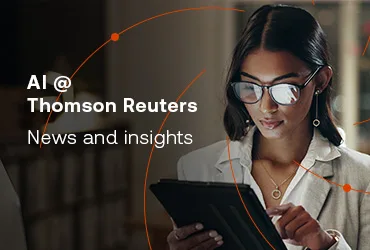AI's widespread use heightens the importance of risk mitigation for businesses to grapple with future challenges and adapt to technological shifts.
Jump to:
| Anticipated future risks |
| Why risk mitigation is a top priority |
| Methods to reduce risk |
AI is being used for everything and its impact on today’s professions is an understatement. As the world spins at an increasingly frenetic pace, keeping up with everything can feel virtually impossible. And yet, for professionals, it is critical to protect their, and their clients’ business. In the face of uncertainty, optimism, risk, and reward, risk mitigation has become a top priority for many as AI infiltrates software and technologies in a “wild west” race where AI regulation and consequences are struggling to keep up.
Thomson Reuters has been at the forefront of incorporating natural language processing searches into their clients’ businesses for over 30 years. Today, Thomson Reuters continues that legacy of being a trusted consultant in supporting client initiatives to introduce AI into their operations. In the Future of Professionals report, we compiled our research and client surveys to identify the top concerns for professionals. Risk mitigation emerged as a top priority for corporations. Here we uncover some key considerations for managing AI and risk mitigation.
Anticipated future risks
The current framework for embracing AI centers around reducing the need for human resources in manual tasks, reducing costs, and reducing the time spent on these tasks. It also shows a lot of promise in the ability to help professionals make informed, data-driven decisions and perhaps better decisions with the expanded scope of considerations and accuracy. Transitioning from the current occupations of staying abreast of regulatory compliance while processing seemingly abundant sources of data to reducing the time staff spend on accumulating and analyzing data frees up large amounts of bandwidth for upskilling and preparing for anticipated future risks. From the 2023 State of Corporate Legal Department report, corporate law departments anticipate there are more risks on the horizon. The most important anticipated risks are keeping up with regulations, identifying risks, and detecting fraud.

Leaning into the abilities of AI is not only imperative today, particularly for those industries that run the risk of being error-prone, but also important to help prepare organizations for the anticipated risks presented by the rapidly changing economy, regulatory environment, and geopolitical climate.
 | Future of Professionals ReportHow AI is the Catalyst for Transforming Every Aspect of Work
|
Why risk mitigation is a top priority
The growing threats of AI to all businesses across so many categories have pushed risk mitigation to the top of the agenda. As corporations look to reposition in-house teams from cost centers to growth enablers, leveraging AI to help mitigate risk takes priority to safeguard the business. With competition growing, bolstering in-house teams by upskilling, or adding new talent in data analysis and AI is a natural evolution of the changing roles within firms.

Protecting businesses from exposure in areas that can have big consequences like cyber security threats, data privacy, supply chain interruptions, volatile geopolitical forces, and continuous regulatory updates requires a huge amount of resources. Augmenting staff with new roles designed to meet the introduction of AI technology offsets the risk of falling behind or not being able to meet client needs for more consultative and comprehensive services cost-effectively. Consequently, risk mitigation has become not only an external concern but an internal one as well.
Methods to reduce risk
Two approaches to reducing risk are the application of tools and software enhanced by AI, and the management of AI-generated information.
These approaches provide a broader spectrum of risk management to incorporate the internal and external. In the Future of Professionals report, professionals reported AI as an area that will make things easier AND will also make things more difficult.
The 2023 State of Tax Corporate Department report revealed that automation/technology was seen as a core tool for the risk management framework. While we have seen governance, risk management, and compliance software platforms as vital tools, AI enhancement will have several benefits. Particularly when it comes to compliance.
- Horizon scanning is where AI can detect future risks and concerns based on pending legislation, proposed rules, and even speeches made by regulators.
- Obligation libraries and regulatory changes will have improved monitoring and notification systems.
- Enhanced cybersecurity and defense with threat detection and real-time monitoring.
- Risk models and data set analysis that can identify patterns, and potential causes and make recommendations to mitigate risks.

When talking about why risk mitigation is a top priority, the conversation tends to focus on accounting and law. Financial institutions also continue to receive hundreds of updates and alerts a day, which are only going to increase as more legislation, such as the Corporate Transparency Act, comes into play. However, the use of AI in risk mitigation extends beyond these professions.
Thomson Reuters conducted a study into supply chain disruption risks and found that in the first five weeks of the Ukraine war, between Feb 2022 and April 2022, there was an average of 323 updates per day to a list of 650 denied parties, for a total of 13,370. Everyone can think of something that was in short supply in 2022 due to supply chain disruptions, with some supply chains still affected. Consequently, ramping up risk mitigation will be a high priority for some industries that feel vulnerable in the wake of geopolitical turmoil and recessionary pressures that affect economies worldwide.
The second approach for risk management as a top priority is in the management of people and the information they have access to. Letting the tools do all the heavy lifting opens the doors to concern about how those tools are being used. Developing policies and building up soft skills should be factored into the implementation and deployment of AI-enhanced tools throughout the organizational risk management (ORM) framework for maximum effectiveness of internal risk mitigation.
Communication protocols and procedures should be updated as stakeholders and authorities look for more transparency in how certain tools are being utilized. Improving resilience management structures, defining new roles, and providing upskilling roadmaps to current employees provide an opportunity for an understanding of how change is to be managed. This is an investment in protecting the business and approaching risk management as a priority from a people perspective. Where people feel more valued and clear on the expectations, there will be less resistance and more support for the new risk mitigation policies and regulations around the use of AI, and spend more time developing more value-based services for clients.
Thomson Reuters has led the way in research and assisting organizations in implementing their processes for decades. The Future of Professionals report offers further insights on risk and fraud on how you can develop growth strategies in the new age of AI.
View the interactive infographic |
|














